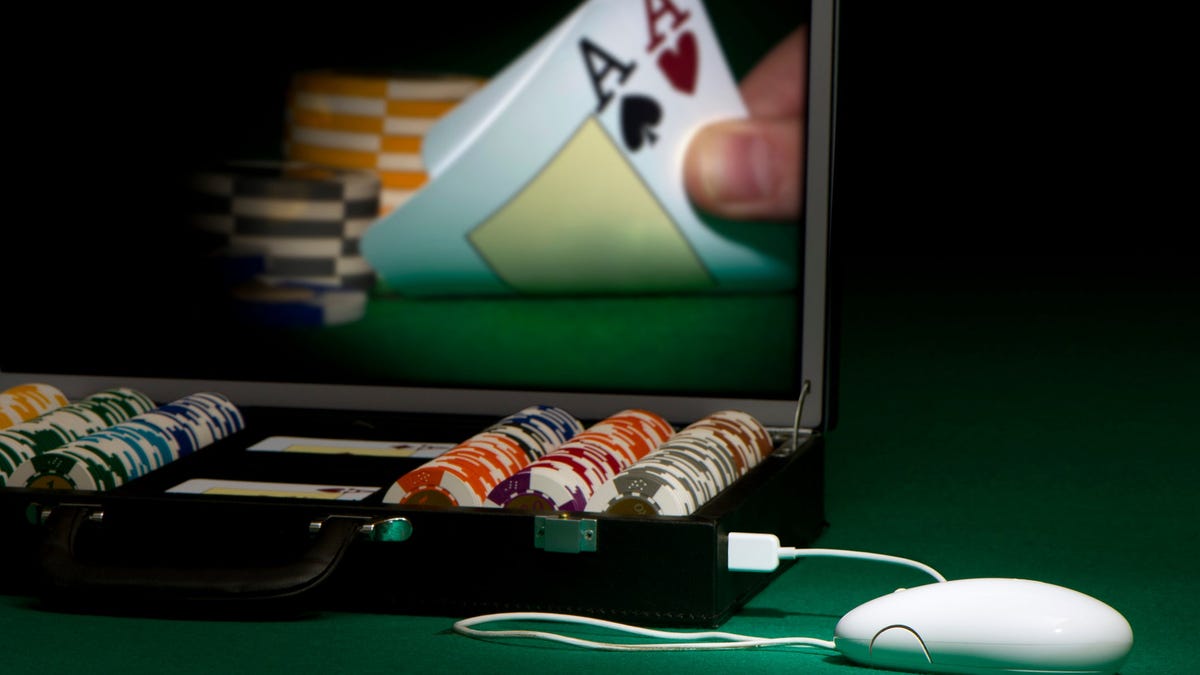Sports
What did NFL learn about S2 after CJ Stroud? 'People in our league can't help themselves'

The truth is C.J. Stroud never let it get to him, even as draft day neared and the questions started coming and the conversation around him shifted.
“Look at my perspective,” he’d say later. “I’m about to get drafted regardless of that dang test.”
He was right — Stroud, the Ohio State quarterback who was among the top prospects in last year’s NFL Draft, still went second to the Houston Texans, and in a matter of months, the 22-year-old would put together one of the most prolific seasons by a rookie quarterback in league history, lifting a franchise from the league cellar to the divisional round of the playoffs.
But his ascent was less assured last April, when Stroud’s on-field intelligence was being debated, even doubted. Most of this stemmed from his leaked score on the S2, a pre-draft cognition test that has quickly gained credence around the NFL for its ability to measure a quarterback’s mental capacity and, some believe, forecast his chances of future success.
Ten months later, it’s hard to tell the story of Stroud’s record-setting rookie season without at least addressing the reliability of that dang test and what the ensuing firestorm says about the draft process and the veracity of the information that trickles out along the way. Too often, according to several high-ranking league executives granted anonymity by The Athletic so they could discuss Stroud and the test without tampering charges, vital context is missing. Stroud’s case, they believe, is a prime example.
For starters, one exec wondered, why was his score leaked to the media in the first place? And by whom?
“I think it was thrown out there by a team that had their own goals and wanted to use it to put him down and gloat on what they wanted seen,” said one general manager whose team was not in the running for a top quarterback in last year’s draft.
“It was complete B.S. that it was leaked,” offered another GM, “but people in our league can’t help themselves.”
Last spring, Stroud was fresh off two stellar seasons as the Buckeyes’ starter and among the most polished passers in a QB-heavy draft. Along with Alabama Heisman Trophy winner Bryce Young, he was in the running to be the first overall selection, owned by the Carolina Panthers. The Texans had the second pick. Both teams desperately needed QBs.
Then, six days before the draft, a red flag: GoLong.com’s Bob McGinn, a veteran NFL reporter and former contributor to The Athletic who speaks annually with league executives before the draft, published the S2 results of several quarterbacks, including Stroud and Young. The difference between the two scores, per McGinn’s reporting, was jarring. Young scored in the 98th percentile. Stroud scored in the 18th.
“That’s like a red alert, red alert, you can’t take a guy like that,” McGinn quoted a league executive saying. “That’s why I have Stroud as a bust. That in conjunction with the fact that, name one Ohio State quarterback that’s ever done it in the league.”
Earlier this month, Stroud earned 48 of a possible 50 votes for Offensive Rookie of the Year. McGinn did not respond when asked about his reporting on the S2 test last year.
GO DEEPER
What C.J. Stroud and his parents saw early, the world is seeing now
The S2 cognition test was first used by NFL teams before the 2016 draft; the Nashville-based company founded by two neuroscientists and former college athletes is currently under contract with half of the league’s 32 teams, two in each division, who effectively pay for the exclusivity of the results.
The test has risen in prominence in recent years, touted for its ability to measure a player’s cognitive ability — specifically, in quarterbacks.
A striking example, detailed last year in The Athletic, was that of Brock Purdy, the overlooked, undersized final pick of the 2022 draft who stepped in for an injured Jimmy Garoppolo halfway through his rookie season and led the San Francisco 49ers to eight straight wins and a berth in the NFC Championship Game. This year, Purdy went 12-4 as a starter, was one of five finalists for MVP and led the 49ers to Super Bowl LVIII.
When The Athletic revealed that Purdy had aced the S2, it further validated the test’s credibility. And it didn’t hurt that two of the best quarterbacks in the league, the Chiefs’ Patrick Mahomes and the Bengals’ Joe Burrow, were also reported to have scored extremely well. (Indeed, Burrow disclosed his own score as being in the 97th percentile.)
The S2 is a nine-part battery of tests that, unlike its Wonderlic predecessor, doesn’t set out to measure an athlete’s intelligence. Instead, its goals are quantifying processing speed, reaction time and the ability to digest information and respond under duress.
“Historically, the NFL has been using different IQ tests to assess how ‘smart’ a player is,” one exec said. “But to be honest, whether or not you can solve a trigonometry question or if you know how many presidents we’ve had … that doesn’t equate to football.”
The S2 lasts around 45 minutes, completed using a specially designed gaming laptop and response pad that tracks pattern recognition and impulse control. In theory, it can reliably forecast how quickly a quarterback’s mind can tick through his progressions, or predict if the game will ever feel “too fast,” a phrase frequently used by coaches and evaluators.
“I did my homework on it, and I think the science behind it is really sound,” said one league executive. “It gives you a snapshot of how quickly an individual can process information, and I don’t think there’s a better tool on the market for that. I feel really comfortable with the data we get back from S2.
“Is it foolproof? Absolutely not. Nothing’s foolproof. But it does give you a sense of how quickly a player can make split-second decisions.”
Every executive contacted for this story stressed that the S2 is merely one tool among many used throughout the draft process. Actual game tape is far more important, they said, as are in-person interviews.
“It’s not the ultimate decision-maker,” one exec said of the S2. “It allows you to confirm what you see on film, or it tells you to ask more questions.”
“You’re not sitting there saying, ‘Oh, tell me what his S2 is,’ then putting him in the second round,” another said. “There’s some positions where I don’t even look at their score at all.”
Houston coach DeMeco Ryans downplayed the S2’s weight in the Texans’ decision-making process last spring. “You don’t pick a guy based on a test,” Ryans said in October. “It’s silly to say, ‘Take one metric,’ when there are so many different variables that go into drafting a guy.”

In his rookie season, Stroud led the Texans to a 10-7 record, an AFC South crown and a wild-card playoff win. (Carmen Mandato / Getty Images)
The luster the S2 enjoyed as a fresh, innovative new tool in the all-important quarterback evaluation has rubbed off largely due to Stroud’s leaked score, the subsequent season and the questions that followed. “They Created a Test to Identify Star QBs,” a recent Wall Street Journal headline read. “How Did It Miss the Best One in Years?”
The league executives contacted for this story made it clear they didn’t put much stock in Stroud’s result last spring, believing from the beginning that the score was suspect. Several confirmed that S2 flagged the result after it came in and that teams were informed it was “unreliable.” (As part of its confidentiality agreement with teams, S2 does not publicly release scores and would not comment on Stroud’s result for this story.)
“From my understanding, the S2 people had a lot of questions when his score came back in,” one exec said. “It got leaked by a club, and they wanted to know why.”
The sense around the league: Stroud didn’t give full effort. It’s more plausible than it sounds. For top prospects like Stroud, the draft process is a day-in, day-out grind — four long months filled with on-field training, physical tests, written tests, a media gauntlet, the Senior Bowl in Mobile, the scouting combine in Indianapolis, private workouts with teams and top-30 visits.
Players sometimes end up taking the S2 at the end of 12- or 14-hour days, the execs pointed out. Others simply don’t test well or don’t believe it’s all that important.
“If you only give 80 percent on this test, you’ll bomb it,” one league source pointed out, “Period.”
“If I were to bet dollars to donuts, I would be stunned if Stroud gave 100 percent on the assessment,” said another. “When he took it, was he tired? Was he choosing not to give it his best? Was he nervous? Had he taken a million other tests that day? There’s a whole host of factors.”
Another exec said the same questions were asked in the draft room he sat in last April.
“It made us all say, ‘Wait a minute, what?’ You watch his tape, and his tape is awesome. He’s processing. He’s playing fast. He’s making good decisions. Maybe this is just an anomaly? Maybe he didn’t try?
“When it’s an outlier like this, you ask yourself, when and where did he take it? Was it his fourth test that day and he’d just had enough? Then you call the agent and say, ‘Hey, he scored really low on this. Can we get him to take it again?’”
It’s unclear if Stroud retook the test last spring, and only the quarterback himself knows if he gave full effort. But during an interview with The Athletic last fall, he seemed to indicate the test was not a top priority during the draft process.
“Some things I apply myself to, some things I don’t,” Stroud said, asked specifically about the S2. “Look, I can show you my high school report card — I’m not a dumb kid. I’m not gonna lie, in school, I was lazy. I would get what I could get so I could play football. And I always had a 3.0 (GPA). That was the standard in my household. That was my mom’s rule.”
After the leak, the conversation around him shifted dramatically. Few — and almost no one in media — stopped to consider if the score was accurate or not.
“Because people don’t care,” Stroud said. “People like negativity these days … but I’m not mad at those (S2) people. It is what it is. I got down to how (the leak) happened, so I got some heads to bust in the offseason.”
With that, Stroud laughed. Asked to clarify what he’d learned about the leak, he shook his head. He was fine letting his play do the talking.
The fallout angered plenty around the league. It still does.
“It paints the picture of the kid that’s a false narrative,” one exec said.
In Indianapolis, Colts general manager Chris Ballard went on a post-draft rant on the subject. Ballard’s Colts had the fourth pick, and he studied Stroud extensively, working out both him and Young privately in California. (With Young and Stroud off the board, the Colts took Florida quarterback Anthony Richardson.)
“I’m gonna go off on a sidebar here,” Ballard said on draft weekend. “All the crap that comes out about these kids … it’s bullsh–. I’m sorry, but it’s bullsh–. Like, people leak these stories, these negative stories on kids, and I don’t agree with it. It’s bullsh–.
“They work their ass off to where they need to be, and then all week you gotta read (this) and they gotta answer questions on it. They’re good kids, and I thought (Stroud) had to take a beating he didn’t have to take.”
Earlier this month, The Athletic reported that at least one agency, Athletes First, which represents nearly 30 draft-eligible prospects — including a handful of projected first-round picks — has advised its players against taking any form of cognitive exam ahead of this year’s draft, a clear response to the situation Stroud found himself in last spring.

GO DEEPER
Sports agency directing NFL Draft prospects to skip cognitive tests
After picking Young first overall, the Panthers maintained he was their preference all along. Former general manager Scott Fitterer said Young’s S2 score played a small role in the evaluation.
“It’s a nice piece,” Fitterer said on draft night. “It reaffirms things.”
But Young, and his 98th percentile, staggered through a disappointing rookie season. The talent-thin Panthers finished a league-worst 2-15. The top pick threw just 11 touchdowns.
Including two playoff starts, Stroud finished with 4,557 passing yards, second-most in NFL history for a rookie passer — and 1,680 more than Young. He opened the season with 192 consecutive pass attempts without an interception, the most ever by a player to begin a career.
He also led the league in passing yards per game (273.9) and touchdown-to-interception ratio (4.6). Only Joe Montana and Tom Brady have had seasons in which they finished first in both categories.
Any doubt that Stroud couldn’t see the field, or couldn’t process at the NFL level, was put to rest quickly and definitively. Perhaps it never should have been a question in the first place.
(Illustration: Daniel Goldfarb / The Athletic; photo: Michael Owens / Associated Press)

Sports
Timberwolves overcome 20-point deficit to stun defending-champion Nuggets in Game 7
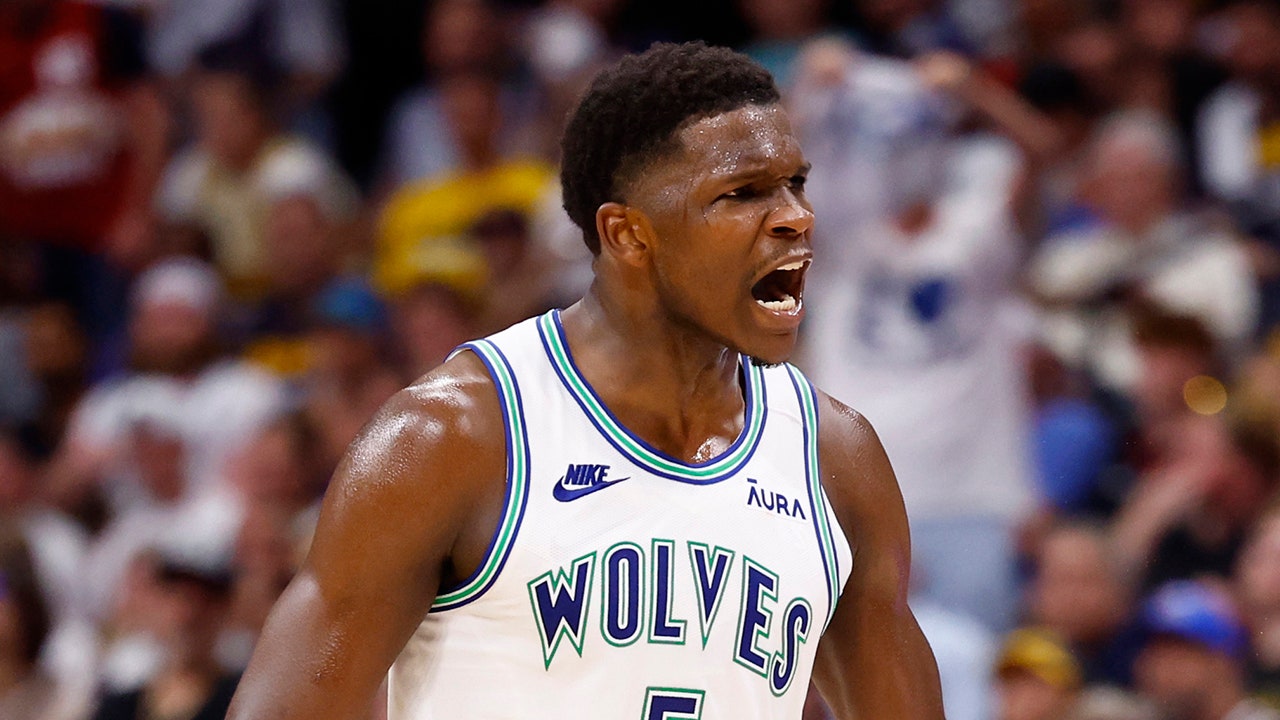
The NBA Conference Finals are set after the second Game 7 on Sunday saw the Minnesota Timberwolves take down the Denver Nuggets, 98-90.
Unlike the league’s earlier Game 7, when the Indiana Pacers made history with their fantastic shooting in a dominant win over the New York Knicks, this one was a dogfight in which Minnesota didn’t pull away until late in the fourth quarter.
The Nuggets, the reigning NBA champions playing at home in this matchup, had all the momentum going for them on Sunday – to where they had a 20-point, 58-38, lead early in the third quarter.
Karl-Anthony Towns #32 of the Minnesota Timberwolves drives to the basket against Christian Braun #0 of the Denver Nuggets during the second quarter in Game 7 of the Western Conference Second Round Playoffs at Ball Arena on Sunday in Denver. (C. Morgan Engel/Getty Images)
Then, Minnesota’s Anthony Edwards finally got shots to fall, and good offense led to great defense on the other end of the floor.
The Timberwolves won the third quarter, 28-14, and they just kept it going into the fourth quarter. Minnesota would have a 30-point swing, which was capped by an Edwards three-pointer that made it 92-82 with 3:07 remaining in the game.
Nuggets fans at Ball Arena were screaming to keep their team in it, but the Timberwolves’ hustle proved to be too much in the end.
PACERS SHOCK KNICKS WITH HISTORIC GAME 7 OFFENSIVE ONSLAUGHT, MOVE ON TO EASTERN CONFERENCE FINALS
Nikola Jokic, who was gassed at the end of this game after sitting just one minute, made his final bucket with 1:02 left to cut the T-Wolves’ lead to five points. There was still a fleeting chance they could come back, but Karl-Anthony Towns – Minnesota’s co-leading scorer – put an exclamation mark on the victory with a putback dunk on a Mike Conley missed layup.
Towns finished with 23 points on 8-of-14 shooting with 12 rebounds, two steals, two assists and one block to help his squad reach the Conference Finals. Teammate Jaden McDaniels also poured in 23 points on 7-of-10 from the field, including three three-pointers with six rebounds.
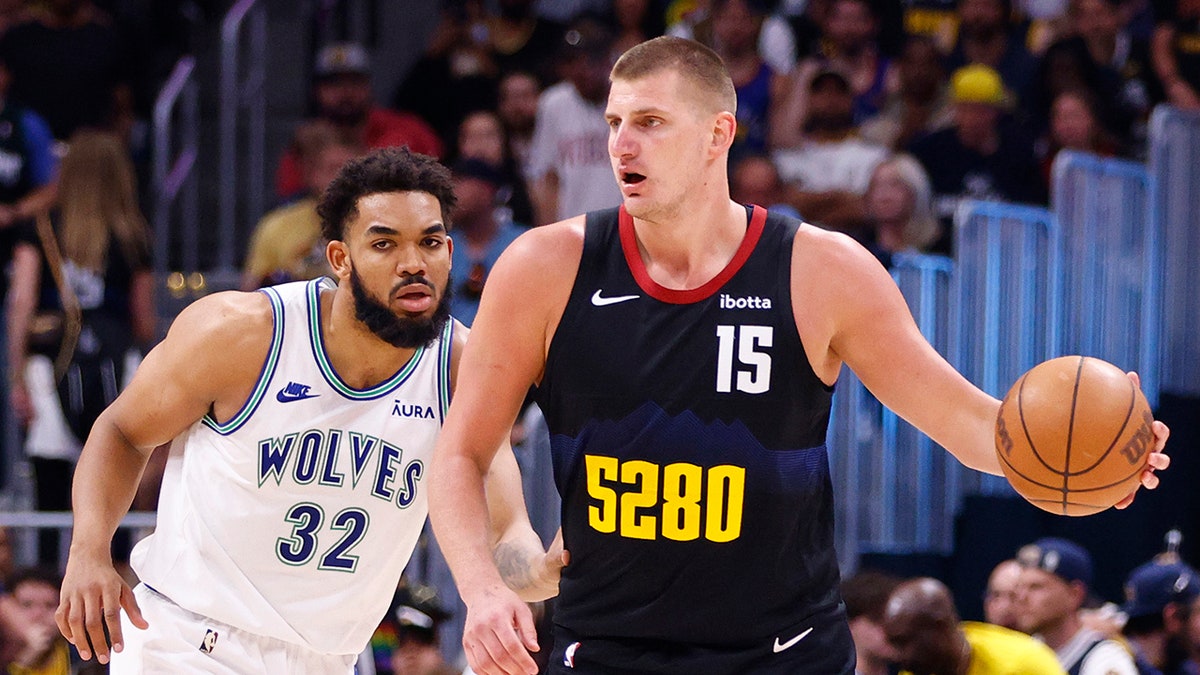
Nikola Jokic #15 of the Denver Nuggets looks to pass against Karl-Anthony Towns #32 of the Minnesota Timberwolves during the third quarter in Game 7 of the Western Conference Second Round Playoffs at Ball Arena on Sunday in Denver. (C. Morgan Engel/Getty Images)
The performance by McDaniels was needed because Edwards, who has been Minnesota’s go-to scorer, didn’t have the best day with the rock in his hand. He finished with 16 points on 6-of-24 shooting, including 2-of-10 from beyond the arc.
However, his hustle never quit, as he had eight rebounds, seven assists and two steals for the T-Wolves.
Minnesota also saw quality minutes from the NBA’s Sixth Man of the Year, Naz Reid, who racked up a couple of clutch buckets in the fourth quarter, including a putback dunk like Towns. He had 11 points and four rebounds.
For the Nuggets, they failed to hit their shots from three, finishing 24.2% as a team. Jokic, who went 2-of-10 from there, ended with 34 points and 19 rebounds during his marathon of a Game 7.
Jamal Murray had a game-high 35 points, but he also struggled from three with only four of his 12 attempts falling. He went 13-of-27 in the field overall with three rebounds and three assists.
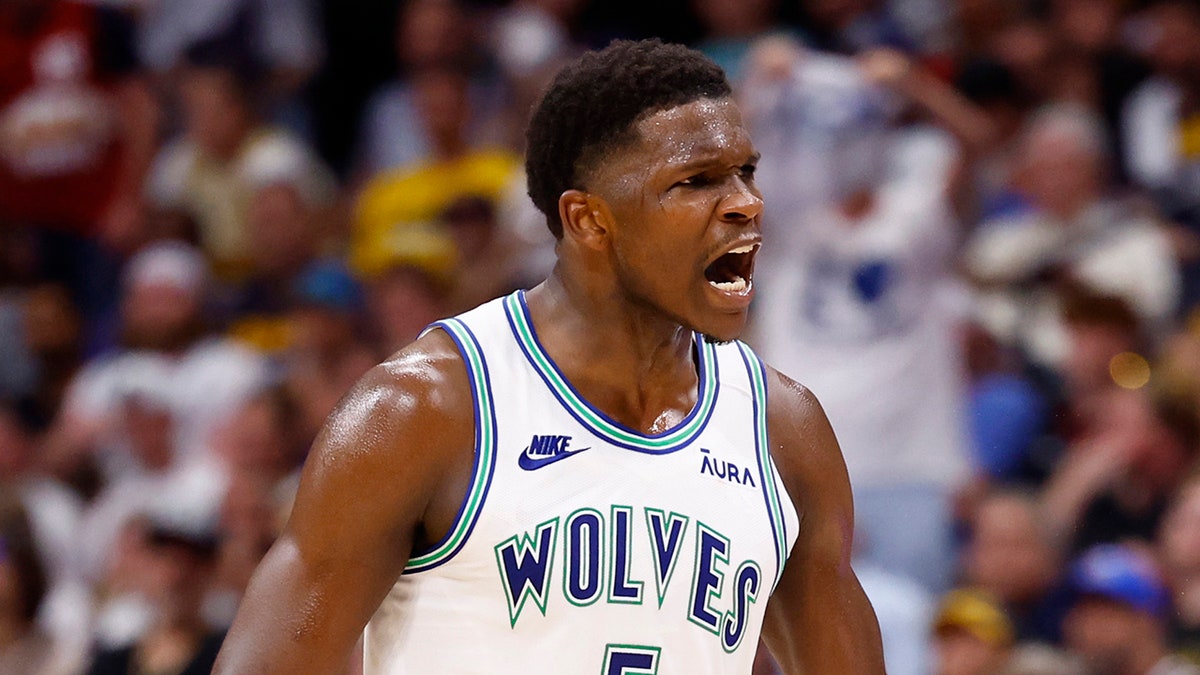
Anthony Edwards #5 of the Minnesota Timberwolves celebrates a three point basket during the third quarter against the Denver Nuggets in Game 7 of the Western Conference Second Round Playoffs at Ball Arena on Sunday in Denver. (C. Morgan Engel/Getty Images)
After the stunning come-from-behind victory, Minnesota will now play host to Dallas on Wednesday to kick off the series that will determine who represents the West in the NBA Finals.
Follow Fox News Digital’s sports coverage on X, and subscribe to the Fox News Sports Huddle newsletter.
Sports
Balanced UCLA softball beats Grand Canyon, advances to super regional
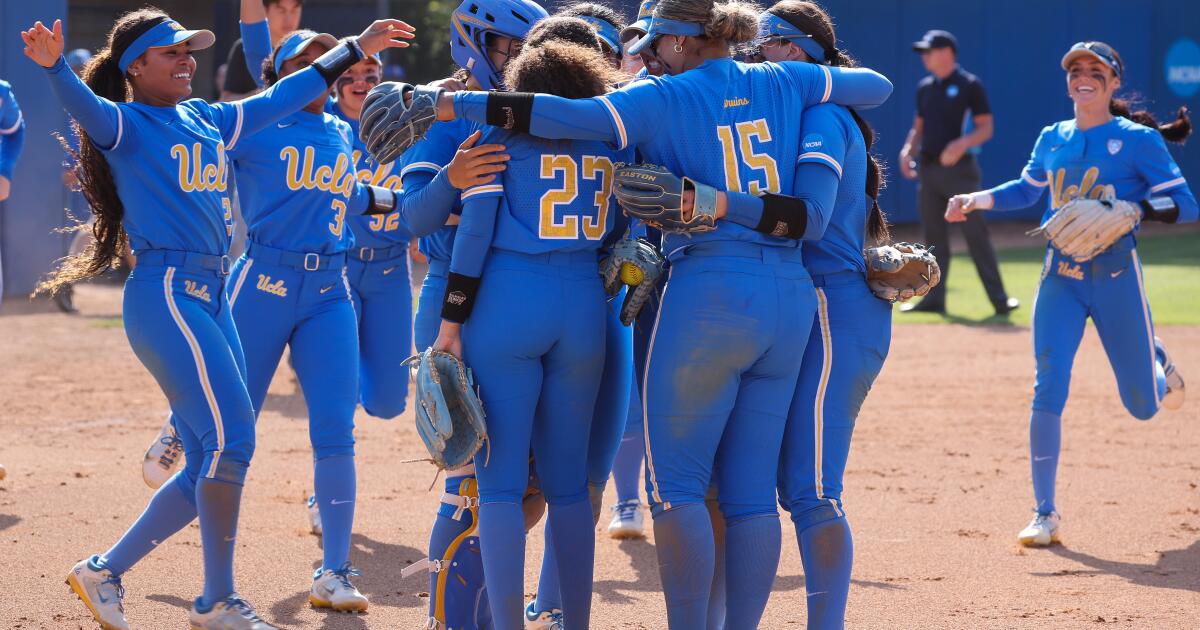
Maya Brady had to wait a little bit, but the Pac-12 Conference player of the year entered the top 10 on UCLA’s all-time hits list in the fifth inning on a single up the middle to give the Bruins a decisive 9-1 run-rule win over Grand Canyon University to win the NCAA softball Los Angeles Regional.
It was UCLA’s second win against Grand Canyon this weekend, with the Bruins also run-ruling the Lopes 9-0 on Friday in the tournament’s opening game.
“We knew that the run-rule on Friday didn’t mean anything, we were just ready to play,” UCLA coach Kelly Inouye-Perez said. “If we wanted to extend our season, we had to take it today no matter who was in the other dugout. It’s about us.”
The Bruins set the tone in the first inning Sunday when senior catcher Sharlize Palacios hit her third home run of the weekend, a moonshot over the left-center- field fence to bring in Brady and Jadelyn Allchin, giving UCLA an early 3-0 lead.
“We were just focused on coming out, it was kind of like a killer mentality. We wanted to go out and make a statement,” Palacios said of her team’s first inning. “We just showed them we were ready to play.”
Allchin, who went three for three with a walk Sunday, led the charge offensively for UCLA with a solo home run to open the top of the third inning and extend the Bruins lead to 4-0. She hit a single in the following inning to load the bases with no outs. The Bruins scored three runs in the fourth to balloon their lead by another four runs.
“I was wanting to come into the game with more patience,” Allchin said of her first home run since April 6. “So just being able to trust the process and just being able to trust all the work that we’ve been putting in, I was able to just kind of set myself up in the position to make contact and put a good swing on it.”
The Lopes got a home run from Tinley Lucas in the bottom of the third inning, but their bats had no answer for UCLA pitcher Taylor Tinsley, who struck out six of the 20 batters she faced through five innings while giving up two hits.
“We wouldn’t be sitting in this room if it wasn’t for Taylor Tinsley and what she’s done throughout this entire season. She’s put the team on her back,” Inouye-Perez said. “Her presence has just locked on and the growth that she’s had from last year to this year is just truly amazing.”
Grand Canyon, on the other hand, went through four pitchers , which head coach Shannon Hays attributed largely to a nagging hip flexor injury to senior Hailey Hudson.
“She’s been a mainstay for us and to not have her innings, how we’ve had them all year, really stretched us,” Hays said of his pitching strategy. “But you know, [we were] probably not trying to get [UCLA’s] lineup too comfortable and see one pitcher over and over. It’s what we attempted to do, obviously it didn’t work out how we wanted it to.”
UCLA will now host Georgia in a super regional next weekend, with the Bruins’ eyes set on Oklahoma City and the Women’s College World Series.
“It’s what we call the ‘success phase’ and it’s the best time of the season,” Inouye-Perez said. “Right now, we just want to keep on playing … and right now, we’re really enjoying playing softball.”
Stanford knocks out Cal State Fullerton
Aly Kaneshiro doubled in two runs during a four-run third inning to lift the Cardinal to a 4-2 victory in a winner-take-all game and eliminate the Titans.
Fullerton took a 2-0 lead in the second inning on a triple to right by Jessi Alcala and later an error on a ground ball that allowed Alcala to score.
Earlier Sunday, Fullerton forced a decisive game against Stanford with an 8-1 win, getting two RBIs from Peyton Toto in a 12-hit attack.
Sports
Xander Schauffele walks it off with 18th-hole birdie to win PGA Championship
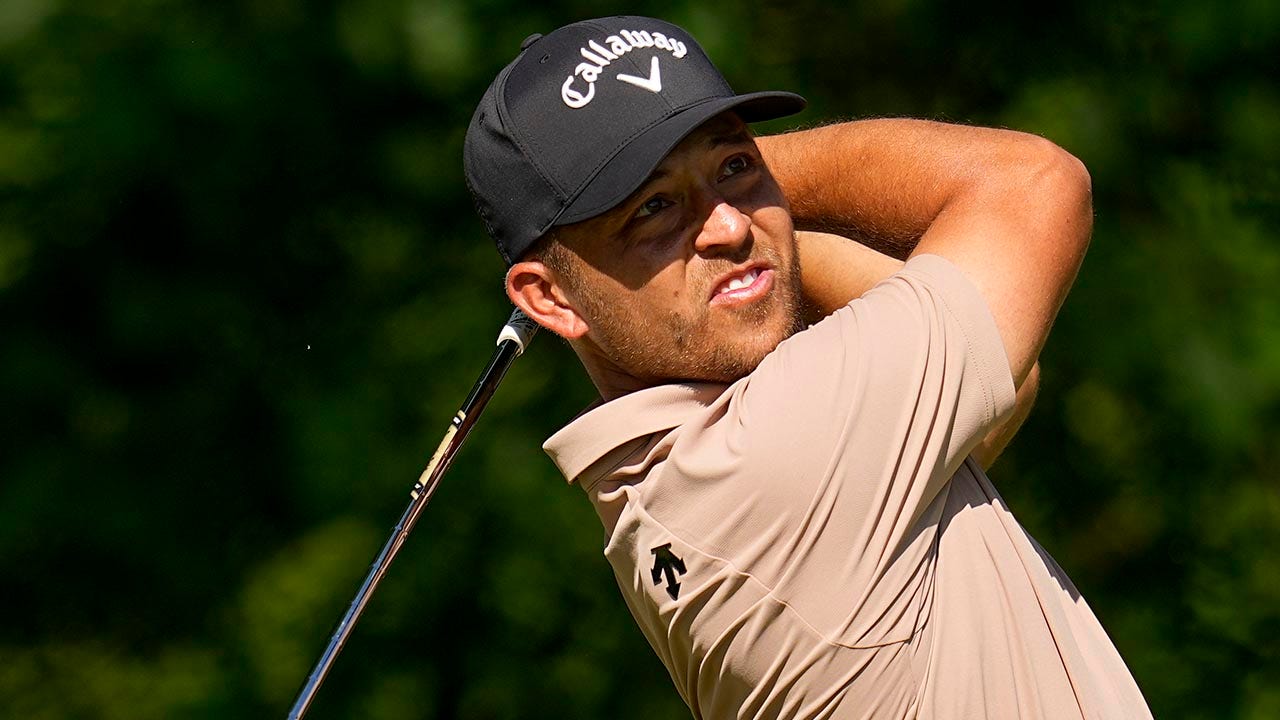
Xander Schauffele walked it off at Valhalla Golf Club on Sunday, birdying the 18th hole to finish 21-under for the PGA Championship victory.
Schauffele’s 263 strokes over his four rounds is the lowest scoring total in major championship history.
Schauffele was tied with Bryson DeChambeau, who shot a 64, at 20-under entering the final hole. Schauffele, after going up and down to save par on the 17th hole, walked into the 18th tee knowing a birdie would give him the Wanamaker Trophy.
He did just that and Schauffele can forever say he’s a major champion.
This is a developing story. Check back for more updates.
-

 News1 week ago
News1 week agoSkeletal remains found almost 40 years ago identified as woman who disappeared in 1968
-

 World1 week ago
World1 week agoIndia Lok Sabha election 2024 Phase 4: Who votes and what’s at stake?
-

 Politics1 week ago
Politics1 week agoTales from the trail: The blue states Trump eyes to turn red in November
-

 World1 week ago
World1 week agoBorrell: Spain, Ireland and others could recognise Palestine on 21 May
-

 World1 week ago
World1 week agoCatalans vote in crucial regional election for the separatist movement
-

 Movie Reviews1 week ago
Movie Reviews1 week ago“Kingdom of the Planet of the Apes”: Disney's New Kingdom is Far From Magical (Movie Review)
-

 Politics1 week ago
Politics1 week agoNorth Dakota gov, former presidential candidate Doug Burgum front and center at Trump New Jersey rally
-

 World1 week ago
World1 week agoUkraine’s military chief admits ‘difficult situation’ in Kharkiv region








